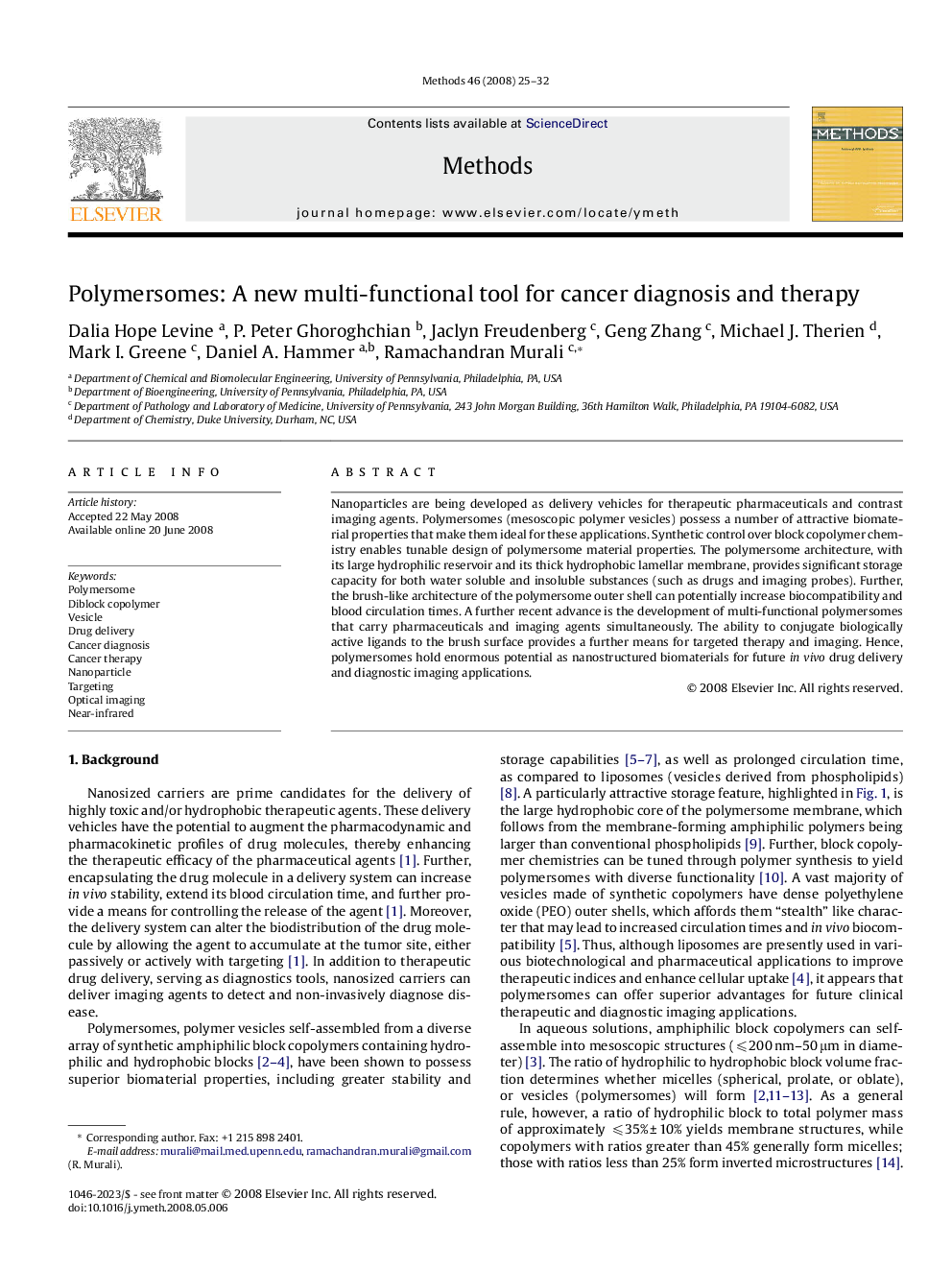| Article ID | Journal | Published Year | Pages | File Type |
|---|---|---|---|---|
| 1994287 | Methods | 2008 | 8 Pages |
Nanoparticles are being developed as delivery vehicles for therapeutic pharmaceuticals and contrast imaging agents. Polymersomes (mesoscopic polymer vesicles) possess a number of attractive biomaterial properties that make them ideal for these applications. Synthetic control over block copolymer chemistry enables tunable design of polymersome material properties. The polymersome architecture, with its large hydrophilic reservoir and its thick hydrophobic lamellar membrane, provides significant storage capacity for both water soluble and insoluble substances (such as drugs and imaging probes). Further, the brush-like architecture of the polymersome outer shell can potentially increase biocompatibility and blood circulation times. A further recent advance is the development of multi-functional polymersomes that carry pharmaceuticals and imaging agents simultaneously. The ability to conjugate biologically active ligands to the brush surface provides a further means for targeted therapy and imaging. Hence, polymersomes hold enormous potential as nanostructured biomaterials for future in vivo drug delivery and diagnostic imaging applications.
